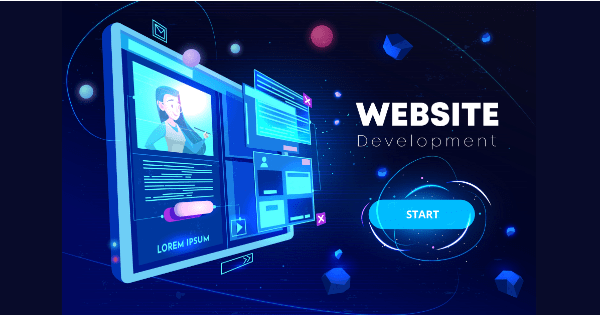Let’s dive into the exciting journey of becoming a web developer! Whether you’re starting from scratch or looking to change careers, this step-by-step guide will bring you through the basics, making the process simple and understandable. From learning about web development to obtaining your first job, we’ve got you covered. Let’s embark on this creative and fulfilling path together!
Step 1: Understand What Web Development Is All About?
Web development is the driving force behind the websites and web applications you enjoy. It includes designing, developing, and maintaining websites, ranging from simple web page layouts to large web applications. There are three key areas:
- Front-end development is the part of a website you interact with directly. The goal is to provide a consistent user experience using HTML, CSS, and JavaScript.
- Back-end development refers to the server-side backbone. It covers database management, server logic, and ensuring that everything on the front end functions properly by processing data behind the scenes.
- Full-stack development involves both front-end and back-end work, encompassing all areas of website development.
- Step 2: Choose Your Path

The next stage is to decide if you want to develop on the front end, back end, or complete stack. Your decision will influence your learning path, the tools you’ll need to master, and the kinds of projects you’ll work on. Here’s a quick overview:
- Front-end: Work on user interface design and experience.
- Back-end: Investigate server, database, and application logic.
- Full stack: understand everything! It’s ambitious, but it makes you really versatile.
Step 3: Learn the Basics
Every web developer begins with the basics. Here are the basic abilities you’ll need:
- HTML and CSS are the web’s fundamental building blocks. HTML structures the content, and CSS styles it.
- JavaScript provides interaction for websites. It is necessary for both the front-end and full-stack routes.
- Responsive Design ensures that websites look wonderful on all devices.
- Version Control/Git tracks code changes and facilitates collaboration with others.
Step 4: Dive Deeper
Once you’ve got the basics down, it’s time to dive deeper:
- Front-end: Explore frameworks like React, Angular, or Vue.js.
- Back-end: Learn server-side languages (e.g., Python, Ruby, and Node.js) and database management (SQL, MongoDB).
- Full-stack: Balance your learning across both front-end and back-end technologies.
Step 5: Build Projects
The theory is great, but the practice is crucial. Start small with personal projects or tutorials and gradually increase complexity. Portfolio projects can include:
- A personal website
- A blog platform
- An e-commerce site
- Interactive web applications
Step 6: Understand the Industry
Web development is more than coding. Understanding the industry trends, design principles, and user experience is vital. Stay updated with the latest technologies and methodologies through:
- Blogs and forums
- Online communities (e.g., GitHub, Stack Overflow)
- Web development podcasts and YouTube channels
Step 7: Get Real-World Experience
Internships, freelance work, and contributions to open-source projects can all provide significant experience. This real-world experience will help improve your résumé and portfolio, making you a more appealing candidate for companies.
Step 8: Prepare for the Job Market
Customise your CV to highlight your web development experience and projects. Prepare for interviews by practising technical questions and explaining your proposal. Networking is essential; use LinkedIn, attend industry meetups, and join web development groups.
Step 9: Master Advanced Development Techniques
As technology advances, so does the complexity of web development. Delve into advanced development techniques that are highly sought after:
Single Page Applications (SPAs): Learn how to build SPAs using frameworks like React or Angular to improve the user experience with faster, more seamless navigation.
Cross-Platform Development: Understand the principles of creating web applications that work flawlessly across various devices and platforms, including mobile devices.
Accessibility and SEO Best Practices: Acquire skills in optimising websites for accessibility standards and search engine visibility, enhancing the user experience and site rankings.

Step 10: Learn About DevOps Practices
Familiarise yourself with DevOps practices and tools that improve collaboration between development and operations teams. This includes:
- Continuous Integration and Continuous Deployment (CI/CD): Automate your development process to streamline testing and deployment.
- Containerization (e.g., Docker): Learn about containerization to enhance application portability and scalability.
- Cloud Services (e.g., AWS, Azure, and Google Cloud): Gain knowledge in cloud computing services for deploying and scaling web applications.
Step 11: Enhance Your Soft Skills
Technical skills are crucial, but soft skills play an equally important role in a web developer’s career. Focus on:
Communication: Effective communication with team members and stakeholders is vital for project success.
Problem-Solving: Develop strong problem-solving skills to tackle challenges creatively and efficiently.
Time Management: Learn to manage your time effectively, prioritise tasks to meet deadlines, and manage multiple projects.
Step 12: Stay Ahead with Continuous Learning
The web development field is dynamic, with new technologies and practices emerging regularly. Commit to continuous learning by:
Following Industry Leaders and Innovators: Keep up with thought leaders and innovators on social media and professional platforms.
Participating in Workshops and Webinars: Engage in workshops and webinars to stay updated with the latest trends and technologies.
Earning Certifications: Consider obtaining certifications in specific technologies or methodologies to validate your skills and knowledge.
Step 13: Build Your Professional Network
A strong professional network can provide support, mentorship, and job opportunities. Expand your network by:
Attending Tech Meetups and Conferences: Participate in local meetups and international conferences to meet like-minded professionals.
Contributing to Open Source Projects: Engage with the open-source community to collaborate on projects and get noticed by industry peers.
Joining Web Development Groups: Online forums and social media groups are great places to share knowledge, ask questions, and connect with other developers.
Conclusion:
In wrapping up, the journey to becoming a web developer is both challenging and rewarding, offering endless opportunities for growth and creativity. By following the outlined steps—from grasping the basics of web development to diving into specialised areas, building a portfolio, and gaining real-world experience—you’re setting the foundation for a successful career. Remember, continuous learning and adapting to new technologies are key in this ever-evolving field. Stay curious, stay connected, and let your passion for coding lead the way. As you step into the dynamic world of web development by hashlogics, know that your skills have the power to create impactful, innovative solutions in the digital landscape. Happy coding!

